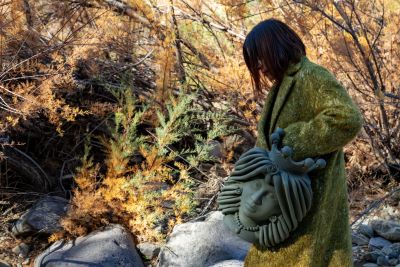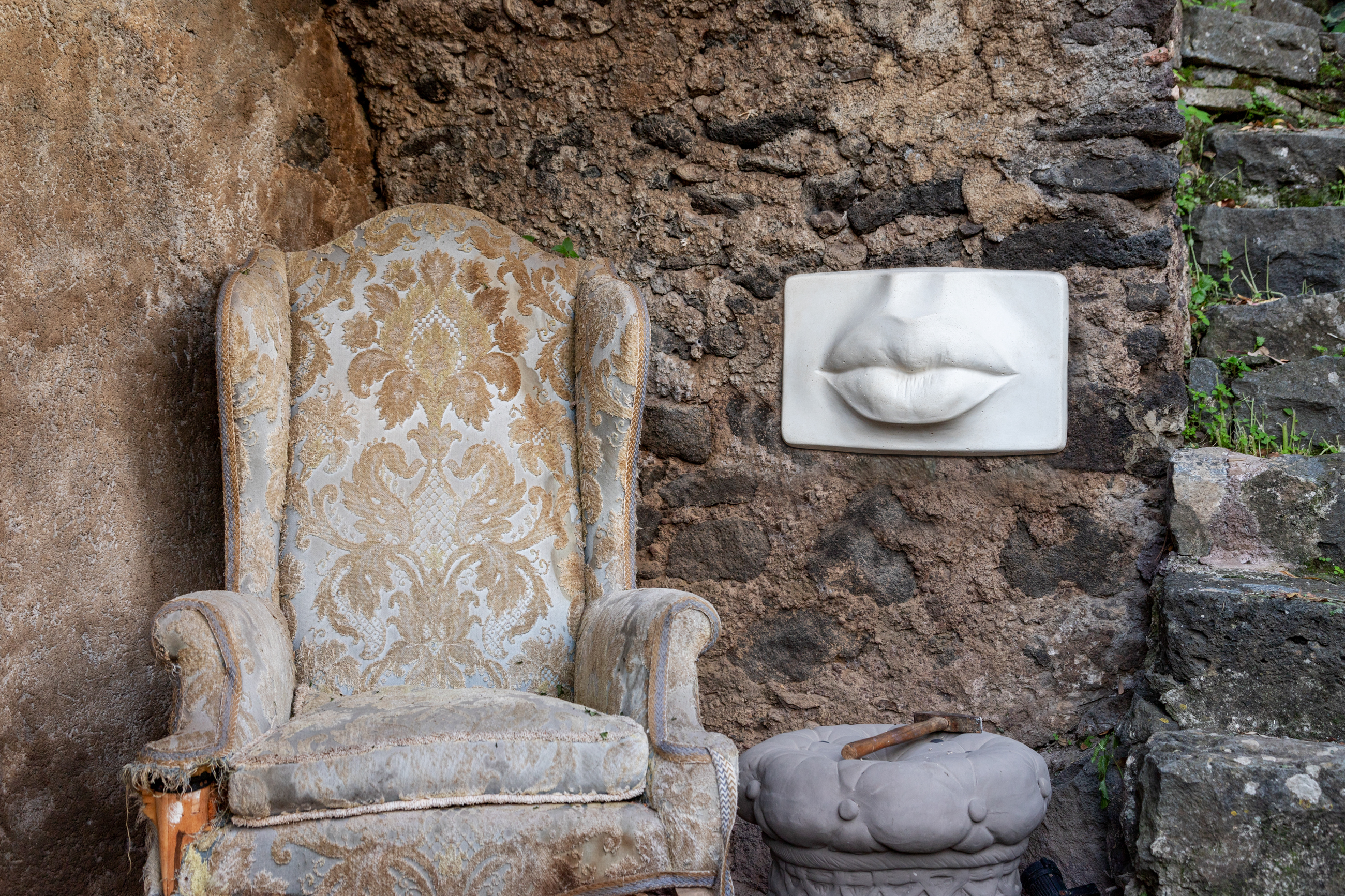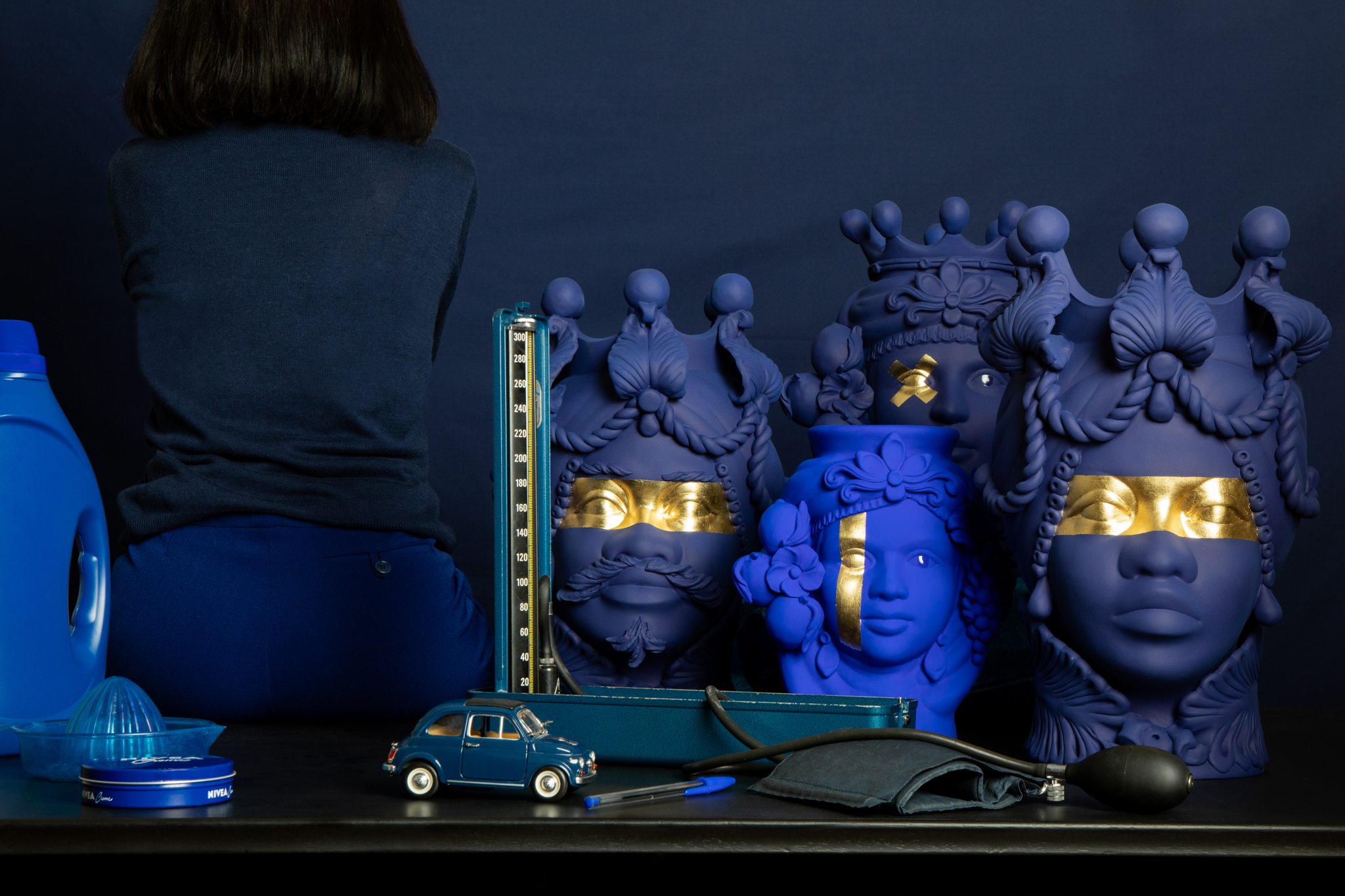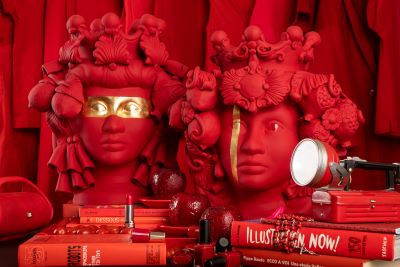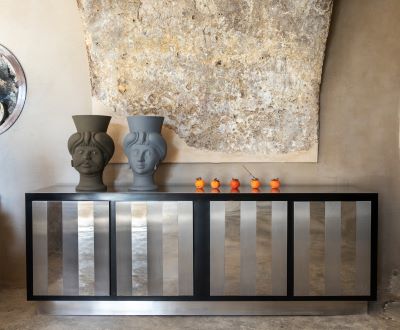Whether she's upcycling discarded materials or working with clay and sand from Mount Etna, Stefania Boemi's works serve as a heartfelt tribute to Sicily's rich history. The sustainably minded artist hand-sculpts her own version of the iconic teste di moro, crafts chandeliers with remnants of holy cards, reupholsters furniture with antique fabrics, reimagines Sicilian puppets using doll heads and lithographed tin boxes, and sews hammocks from traditional bedspreads. Her artistry extends to her ambitious restoration of a more than 1,000-year-old Arabic paper mill into a sanctuary for art and cultural events.
I recently had the opportunity to connect with Stefania, who shared her background, drive, process, and more.
You are originally from Bronte. How did that factor into your artistic journey?
I believe that growing up in a place where boredom is abundant gives creative minds the opportunity to explore various ways to fill time. Creating something from nothing or very little is one of these possibilities. I think that if I had grown up in a city and had been one of many children with days filled with pre-arranged activities by parents, like swimming, dance, or English lessons (just to name a few examples), I probably would have become something entirely different.
Your training is in physiotherapy; what influence has this had on your art?
I worked full-time for almost 20 years in neurorehabilitation, a branch of physiotherapy that exposed me to devastating, often dire illnesses and connected me with people with whom I formed deep bonds. The contact with their suffering and the opportunity to help them navigate their difficult days taught me a great deal and inevitably shaped my worldview. But at a certain point, I felt the need to give space to parts of myself that hadn't had the time to be "cultivated." That's where the choice to split my life between physiotherapy (which I still practice) and art came from. I would say that the creative part of me influenced my approach to physiotherapy, not the other way around!
Stefania Boemi
What drives your passion for sustainability in art, and how do you select materials?
Nowadays, there's a lot of talk about ecology, eco-art, "green" practices, and sustainability. These topics have become "trendy!" But for me, it's simply about love and admiration for the beauty of nature. These sentiments, if we can call them that, were inherited from my mother. I grew up in the countryside, and after a long pause living in the city four years ago, I chose to return to live amidst nature. It feels natural for me to be "sustainable" in everything I do. The materials I choose are either "repurposed" (like the bedspreads I use for hammocks, the crystals for my chandeliers, or the lithographs for my cushions) or sourced locally (like clay or sand from Mount Etna). The connection to the island is strong, omnipresent, and indispensable in both cases.
Stefania frequently repurposes vintage materials.
Tell us about your creative process.
Describing the creative process behind my pieces is quite difficult for me. In most cases, it's an instinctive spark. Once that spark ignites, the step to realization is immediate and materializes through a sequence of trials and errors—until exhaustion! I study the results and explore possible solutions. My hands are the instruments of my imagination, and controlling the material becomes both a pleasure and a surprise. When I recognize poetry in the achieved form, the creative process is complete for me.
Teste di moro reimagined by Stefania Boemi
How do you incorporate Sicily's culture and history into your work?
I think I achieve this through the choice of materials. Clay is Sicilian soil, and the teste di moro, with their legend, tell a piece of the island's history. The association and identification happen naturally, and in this case, obviously. Other pieces have more secret ties, perhaps less evident. They involve the reuse of materials/objects with a past story linked to local customs and habits. Our roots are important. They need to be preserved. They tell us who we are and our identity. They allow us to differentiate ourselves and maintain a world with millions of diverse peoples, each with their traditions, colors, customs, and habits. And that's simply wonderful. Imagine how boring the world would be if we were all the same!
Red teste di moro by Stefania Boemi
Are there any upcoming projects you are particularly excited about?
Yes, there are new projects on the horizon that also involve my current artistic production in some way. But the project is much broader. Four years ago, I fled the city and purchased an estate on the banks of the Simeto River. It includes the Arabic Paper Mill of Ricchisgia, a building dating back to the year 1,000. It was constructed by the Arabs during their domination of Sicily, with 26,000 square meters of land cultivated with pistachios and olives. The Paper Mill, after the Arabs left, was transformed into a convent and inhabited by the Benedictine and Basilian orders for about three centuries. The entire property was later donated to Count Nelson, who became the Duke of Bronte. It remained in his family's possession until the 1970s. I was overwhelmed by the beauty of this little-known, secret place, which is part of an important minor historical heritage. It became my place in the world and my world. Here, I live and work surrounded by unspoiled nature, with rhythms and habits vastly different from those I previously had. I am personally involved in restoring and rehabilitating this extraordinary space. It's a complex project, challenging on many levels, especially financial. But it has become a life project. I'll host art and events. There's still much to do, but so much has already been accomplished. When I finish (if I ever do), I'll be able to say it was the most beautiful work I've ever done.
Medusa by Stefania Boemi
What advice would you give young artists?
I came across this writing by Rainer Maria Rilke, which encapsulates everything I could advise:
My daughter, if you feel a fire within,
a light burning deep inside,
don't smother it with the doubts of the world,
don't extinguish the fire with fear.
The path of the artist is long and uncertain,
but full of hidden treasures;
every brushstroke, every note, every word
is a step toward your truth.
Don't seek the approval of others,
don't expect applause at every step.
Art lives within you,
a silent song that only you can hear.
Create out of love, my daughter,
not for success or fame,
because true art is born from the heart,
not from the hands of those who judge.
You are young, and the world is vast,
full of dreams to paint,
of sounds to capture,
of stories to tell.
Be brave, and never stop searching,
because the artist never finds the journey's end,
but only new roads to explore,
new skies to paint with the stars.
Perseo and Andromeda by Stefania Boemi
What do you hope to share through your art?
In my view, art has the duty to evoke emotions. I hope to succeed in offering this—a small emotion.
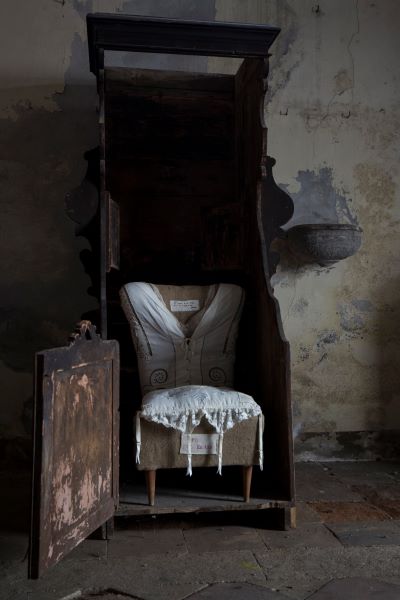
Upcycled and reupholstered by Stefania Boemi
If you enjoyed this article, consider subscribing to my newsletter for more content and updates!

